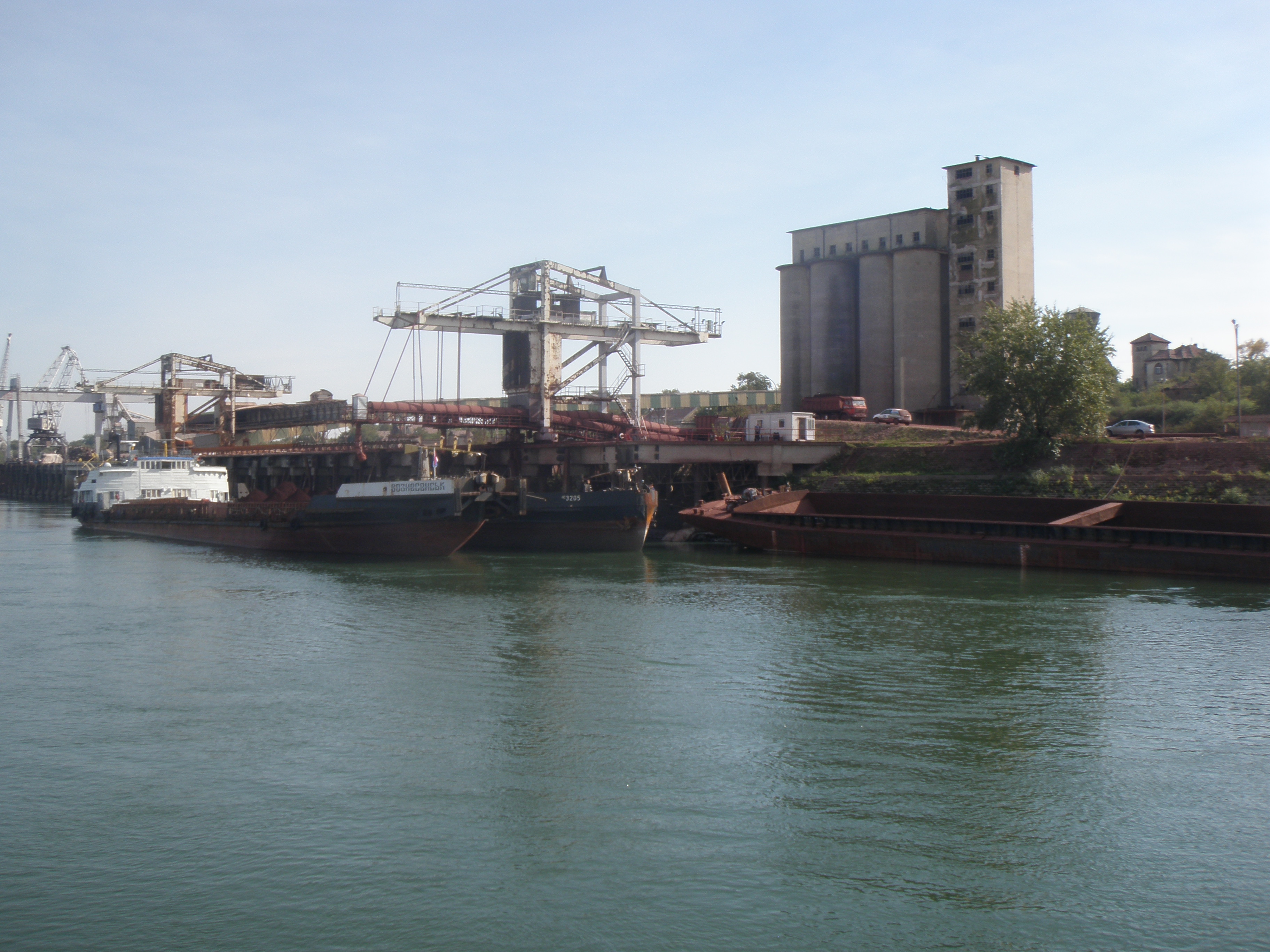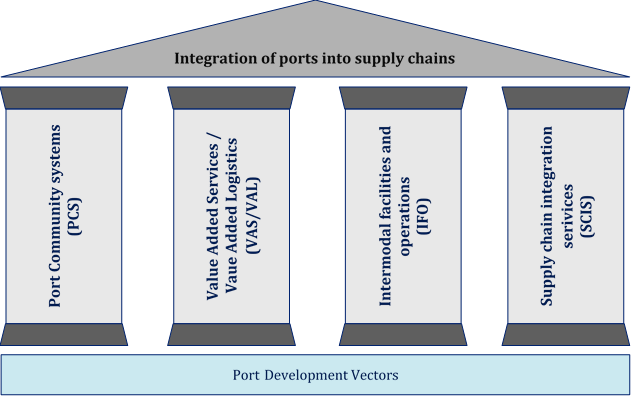DAPhNE - Crown of the project: Strategy & Action Plan for the development of Danube Ports
16-06-2019
Being a “crown” of the entire project, the Danube Port Development Strategy and Action Plan (hereinafter: Strategy), encompassed the inputs from all other work packages and activities through the definition of objectives and measures, as well as their justification. The aim of the activity was to provide a detailed diagnosis of the current “flaws and virtues” of the Danube port industry, determine its place in the future transport and supply chains, and to define the development (strategic) objectives and the accompanying implementation measures.
The activity was headed by iC consulenten who also developed a methodology for the SWOT analysis, determination of the SWOT-based strategic objectives and measures necessary to achieve the strategic objectives. In addition, iC also provided an analysis of the current position and prospects of the Danube ports in the light of significant differences from the trade patterns and port challenges in Western Europe. DAPhNE project partners provided valuable inputs for all stages during the elaboration of the Strategy.
The activity was performed from October 2017 to June 2019. Constant communication with participating port authorities, port associations, ministries, port operators taking part in the elaboration of the Strategy, provided the necessary polishing and fine tuning. Various elements of the Strategy have been presented during various meetings within the project implementation itself, as well as during the Tenth Meeting of the Working Group on Inland Waterways and Ports of the Rhine-Danube Core Network Corridor, held in Brussels, on 21 November 2018. Several stakeholders took active discussion and provided valuable feedback, which was embedded in the Strategy.

Port of Prahovo (source: iC)
The Strategy, covering the period of 8 years (2020 – 2027) is divided into an analytical part and a part containing individual strategic objectives and implementation measures for each objective. The SWOT analysis of the Danube region port industry, being an analytical part of the Strategy, was performed using a triple layer – that of individual ports participating in the analysis, national port industries and an entire Danube region port industry. A total of 21 ports in the Danube region were subject to SWOT analysis. Based on these 21 SWOT analyses, a country wide SWOT analyses of port industries in Austria, Slovakia, Hungary, Croatia, Serbia, Romania and Bulgaria were elaborated, reflecting the current situation of the respective port industries, taking into account the internal (with respect to the port industry) strengths and weaknesses and external threats and opportunities. In order to facilitate a provision of harmonized inputs for the Strategy, a “Common SWOT analysis” was created involving the most important strengths, weaknesses, threats and opportunities of the entire Danube area port industry as a single “entity” with a single “voice”.
All Danube ports are directly connected with the seaport of Constanta, acting as a gate, or the “Rotterdam of the East” for virtually all Danube countries. This gives them a comparative advantage over other transport routes in terms of cost efficiency, generalized transport costs and even cost of externalities. Corporatization of port authorities is also seen as one of the strengths on which future development directions should be built, as this port management model provides enough flexibility to port authorities to react on market dynamics and changes in demand for different port operating services, including the value-added services. Thanks to the growing reintroduction of industrial production in the ports or in their immediate vicinity, Danube ports have the opportunity to exploit this phenomenon and use it to their own advantage, by offering the industry a quick, competitive and reliable service and the benefits of the economies of scale offered by inland waterway transportation.
Danube ports also have several weaknesses which need to be minimized or eliminated when and if possible. Most notable weaknesses focus around the excess capacity or low utilization of the available capacities, as well as lack of resources for provision and improvement of high-quality road and rail connections of ports with the rest of the network. Insufficient lobbying for interests of ports is also seen as one of the common weaknesses of the entire Danube port industry. Port industry in the Danube area is faced with a number of threats which are external to ports themselves, such as persisting navigation hindrances along the Danube and fierce competition of road and rail sectors feeding the industrial and commercial sectors along the Danube directly from nearby seaports in the Adriatic, Aegean and even North Sea.

Four indicators determining the integration of ports into suply chains
Based on the carefully identified and analysed strengths, weaknesses, opportunities and threats of the national port industries, the project team has identified strategic development objectives and adequate development measures needed to ensure the implementation of the objectives. Both objectives and development (implementing) measures are identified on a dual level – national (based on “Cumulative” SWOT analysis of all participating ports) and regional (based on “Common” SWOT analysis) level. In this view, the second part of the Strategy contains the national strategies and the common strategy based on common objectives and measures.
Considering all strengths, weaknesses, opportunities and threats, as well as the defined objectives and measures, the following main development vectors can be identified as common for the entire port industry in the Danube region:
- Multimodal hubs with varying levels of intermodal facilities, serving at least as the basic interface between the various transport modes.
- Port-centric and sustainable hybrid logistic zones attracting port-related services, and, wherever possible, industrial facilities for the manufacturing, processing and logistic industries.
- Convenient regional business platforms for the trade and industry. Danube region ports have a vast but heavily underused potential to be the focal points of the regional economy.
- Specialised centres for handling of specific cargoes, including not just ship-to-shore transfer facilities and services, but also a full spectrum of logistic and industrial activities for specific cargoes.
- Facilitators of supply chains through integration into them.
From the Strategy’s point of view, it is very important to avoid a common mistake of comparing the Danube ports with the Rhine ports. Most of the accessible development strategies of EU inland ports are based on the challenges, issues, trade patterns and transportation geography of inland ports of the Western Europe and focus mostly on container traffic to/from main gateway ports in the North Sea. Quite the contrary, regular containerized cargo flows converging in the Danube ports from inland waterways are virtually non-existent.
Since their third generation, ports are extending their service portfolio towards the wide array of logistics and value-added services for vessels and cargoes. By doing so, ports are integrating themselves into supply chains. Integration of ports into supply chains is done through intermodality and organisational integration.
What is common for most of the successful contemporary ports is the various level of industrial and logistic activities in or adjacent to port areas. In this view, the Strategy contains various approaches on how to attract more industrial and logistic activities, to be either integrated in port activities or to be very closely correlated with them in order to benefit from synergies, concentration of vehicles and cargoes, intermodal options for cargo distribution, as well as from the spatial concentration of production, transport and logistic activities.

Port of Belgrade (source: http://gdeinvestirati.com/wp-content/uploads/2017/05/luka-beograd.jpg)
Globalization and the modern age have put a tremendous pressure on port authorities. In order to survive and thrive, port authorities should become less static and think “out of the box”. This means that port authorities should widen their scope beyond that of the traditional trade facilitator with the century’s old focus on the provision of basic and operational infrastructure and facilities for transhipment and storage. Modern waterborne logistics, transportation and port operations dictate that ports should have a new strategic role to play in land use planning, facilitation of the relocation of production, manufacturing and logistic facilities in or near port areas, supply chain integration, information systems and intermodality/multimodality. This role requires networking, not just between ports, but also between ports and other nodes, operators and market players. Although it may not be a universal panacea for ports, going beyond the limits of the port area in terms of physical interventions and organisational capabilities along supply chains stands good chances to gain competitive advantage for ports in the medium and long run.
The Strategy itself will be used in the updates of the national and individual port strategies as an inventory of objectives and measures applicable in all ports as per their own needs. Moreover, it will be a source of ideas for the future project pipeline of the Danube Ports Network.
Author of the article:
Dr.-Ing. Saša Jovanović
iC consulenten Ziviltechniker GesmbH
s.jovanovic@ic-group.org
